Granulocyte colony stimulating factor therapy for acute myocardial infarction
- PMID: 23728682
- PMCID: PMC8454260
- DOI: 10.1002/14651858.CD008844.pub2
Granulocyte colony stimulating factor therapy for acute myocardial infarction
Abstract
Background: Acute myocardial infarction (AMI) is the leading cause of death in developed countries, and current treatment modalities have failed to regenerate the dead myocardium resulting from the ischemic damage. Stem cells have the potential to regenerate the damaged myocardium. These cells can be mobilized from the bone marrow by factors such as granulocyte colony stimulating factor (G-CSF).
Objectives: To assess the effects of stem cell mobilization following granulocyte colony stimulating factor therapy in patients with acute myocardial infarction.
Search methods: We searched CENTRAL (The Cochrane Library Issue 4, 2010), MEDLINE (1950 to November week 3, 2010), EMBASE (1980 to 2010 week 48), BIOSIS Previews (1969 to 30 November 2010), ISI Science Citation Index Expanded (1970 to 4 December 2010) and ISI Conference Proceedings Citation Index - Science (1990 to 4 December 2010). We also checked reference lists of articles.
Selection criteria: We included randomized controlled trials including participants with a clinical diagnosis of AMI who were randomly allocated to the subcutaneous administration of G-CSF through a daily dose of 2.5, 5 or 10 microgram/kg for four to six days or placebo. No age or other restrictions were applied for the selection of patients.
Data collection and analysis: Two authors independently selected trials, assessed trials for eligibility and methodological quality, and extracted data regarding the clinical efficacy and adverse outcomes. Disagreements were resolved by the third author.
Main results: We included seven trials reported in 30 references in the review (354 participants). In all trials, G-CSF was compared with placebo preparations. Dosage of G-CSF varied among studies, ranging from 2.5 to 10 microgram/kg/day. Regarding overall risk of bias, data regarding the generation of randomization sequence and incomplete outcome data were at a low risk of bias; however, data regarding binding of personnel were not conclusive. The rate of mortality was not different between the two groups (RR 0.64, 95% CI 0.15 to 2.80, P = 0.55). Regarding safety, the limited amount of evidence is inadequate to reach any conclusions regarding the safety of G-CSF therapy. Moreover, the results did not show any beneficial effects of G-CSF in patients with AMI regarding left ventricular function parameters, including left ventricular ejection fraction (RR 3.41, 95% CI -0.61 to 7.44, P = 0.1), end systolic volume (RR -1.35, 95% CI -4.68 to 1.99, P = 0.43) and end diastolic volume (RR -4.08, 95% CI -8.28 to 0.12, P = 0.06). It should also be noted that the study was limited since the trials included lacked long enough follow up durations.
Authors' conclusions: Limited evidence from small trials suggested a lack of benefit of G-CSF therapy in patients with AMI. Since data of the risk of bias regarding blinding of personnel were not conclusive, larger RCTs with appropriate power calculations and longer follow up durations are required in order to address current uncertainties regarding the clinical efficacy and therapy-related adverse events of G-CSF treatment.
Conflict of interest statement
None known.
Figures

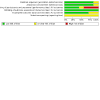
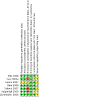
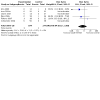
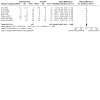

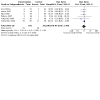
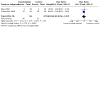
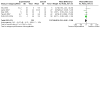

Update of
- doi: 10.1002/14651858.CD008844
References
References to studies included in this review
Ellis 2006 {published data only}
-
- Ellis SG, Penn MS, Bolwell B, Garcia M, Chacko M, Wang T, et al. Granulocyte colony stimulating factor in patients with large acute myocardial infarction: results of a pilot dose-escalation randomized trial. American Heart Journal 2006;152(1051):e9-14. - PubMed
Ince 2005a {published data only}
-
- Ince H, Petzsch M, Kleine HD, Schmidt H, Rehders T, Körbern T, et al. Preservation from left ventricular remodeling by front-integrated revascularization and stem cell liberation in evolving acute myocardial infarction by use of granulocyte-colony-stimulating factor (FIRSTLINE-AMI). Circulation 2005;112:3097-106. - PubMed
Leone 2007 {published data only}
-
- Leone AM, Galiuto L, Garramone B, Rutella S, Giannico MB, Brugaletta S, et al. Usefulness of granulocyte colony-stimulating factor in patients with a large anterior wall acute myocardial infarction to prevent left ventricular remodeling (the Rigenera study). American Journal of Cardiology 2007;100:397-403. - PubMed
Ripa 2006 {published data only}
-
- Ripa RS, Jørgensen E, Wang Y, Thune JJ, Nilsson JC, Søndergaard L, et al. Stem cell mobilization induced by subcutaneous granulocyte-colony stimulating factor to improve cardiac regeneration after acute ST-elevation myocardial infarction: result of the double-blind, randomized, placebo-controlled Stem cells in Myocardial Infarction (STEMMI) trial. Circulation 2006;113:1983-92. - PubMed
Takano 2007 {published data only}
-
- Takano H, Hasegawa H, Kuwabara Y, Nakayama T, Matsuno K, Miyazaki Y, et al. Feasibility and safety of granulocyte colony-stimulating factor treatment in patients with acute myocardial infarction. International Journal of Cardiology 2007;122:41-7. - PubMed
Valgimigli 2005 {published data only}
-
- Valgimigli M, Rigolin GM, Cittanti C, Malagutti P, Curello S, Percoco G, et al. Use of granulocyte-colony stimulating factor during acute myocardial infarction to enhance bone marrow stem cell mobilization in humans: clinical and angiographic safety profile. European Heart Journal 2005;26:1838-45. - PubMed
Zohlnhöfer 2006 {published data only}
-
- Zohlnhöfer D, Ott I, Mehilli J, Schömig K, Michalk F, Ibrahim T, et al. Stem cell mobilization by granulocyte colony-stimulating factor in patients with acute myocardial infarction: a randomized controlled trial. JAMA 2006;295:1003-10. - PubMed
References to studies excluded from this review
De Lezo 2007 {published data only}
-
- De Lezo JS, Herrera C, Pan M, Romero M, Pavlovic D, Segura J, et al. Regenerative therapy in patients with a revascularized acute anterior myocardial infarction and depressed ventricular function. Revista Espanola de Cardiologia 2007;60:357-65. - PubMed
Engelmann 2006 {published data only}
-
- Engelmann MG, Theiss HD, Hennig-Theiss C, Huber A, Wintersperger BJ, Werle-Ruedinger AE, et al. Autologous bone marrow stem cell mobilization induced by granulocyte colony-stimulating factor after subacute ST-segment elevation myocardial infarction undergoing late revascularization: final results from the G-CSF-STEMI (Granulocyte Colony-Stimulating Factor ST-Segment Elevation Myocardial Infarction) trial. Journal of the American College of Cardiology 2006;48:1712-21. - PubMed
Gloekler 2009 {published data only}
-
- Gloekler S, Meier P, Zbinden R, Marchi SF, Rutz T, Indermuehle A, et al. Granulocyte-colony stimulating factor (G-CSF) promotes coronary collateral growth and myocardial microvascular function in patients with coronary artery disease: a randomized, double-blind, placebo-controlled study. Journal of the American College of Cardiology 2009;53(10):A347.
Guo 2008 {published data only}
-
- Guo YH, He JG, Wu JL, Yang L, Zhang DS, Tan XY, et al. Hepatocyte growth factor and granulocyte colony-stimulating factor form a combined neovasculogenic therapy for ischemic cardiomyopathy. Cytotherapy 2008;10:857-67. - PubMed
Huttmann 2006 {published data only}
-
- Huttmann A, Duhrsen U, Stypmann J, Noppeney R, Nuckel H, Neumann T, et al. Granulocyte colony-stimulating factor-induced blood stem cell mobilisation in patients with chronic heart failure - feasibility, safety and effects on exercise tolerance and cardiac function. Basic Research in Cardiology 2006;101:78-86. - PubMed
Hyun‐Jae 2003 {published data only}
-
- Hyun-Jae K, Hyo-Soo K, Hyun-Jae C, Bon-Kwon K, Yong-Jin K, Byung-Hee O, et al. Granulocyte-colony stimulating factor-induced mobilization and intracoronary infusion of mobilized whole leukocytes is a feasible and safe method of stem cell transplantation in patients with myocardial infarction. American Journal of Cardiology 2003;92:107L.
Joseph 2008 {published data only}
-
- Joseph J, Mehta P, Rimawi A, Cottler-Fox M, Sinha A, Mansingh B, et al. Stem cell mobilization utilizing granulocyte colony stimulating factor in advanced chronic heart failure: lessons from a pilot study. European Heart Journal Supplements 2008;10:K24-6.
Kang 2006 {published data only}
-
- Kang H-J, Kim H-S, Na S-H, Zhang S-Y, Kang WJ, Youn T-J, et al. Six months follow up results of "granulocytes-colony stimulating factor" based stem cell therapy in patients with myocardial infarction: MAGIC cell randomized controlled trial. Korean Circulation Journal 2006;36:99-107.
Kuethe 2004 {published data only}
-
- Kuethe F, Figulla HR, Voth M, Richartz BM, Opfermann T, Sayer HG, et al. Mobilization of stem cells by granulocyte colony-stimulating factor for the regeneration of myocardial tissue after myocardial infarction. Deutsche Medizinische Wochenschrift 2004;129:424-8. - PubMed
Kuo 2009 {published data only}
-
- Kuo LT, Chen SJ, Cherng WJ, Yang NI, Lee CC, Cheng CW, et al. Late reperfusion of a totally occluded infarct-related artery increases granulocyte-colony stimulation factor and reduces stroma-derived factor-1alpha blood levels in patients with ongoing ischemia after acute myocardial infarction. International Heart Journal 2009;50:433-44. - PubMed
Li 2004 {published data only}
-
- Li YW, Genzou T, Hideshi O, Shusaku M, Masayau E, Rumi M, et al. G-CSF upregulates myocardial Akt and improves function of the hearts with established heart failure due to large old myocardial infarction. Journal of Cardiac Failure 2004;10:S190.
Meier 2009 {published data only}
-
- Meier P, Gloekler S, Marchi SF, Indermuehle A, Rutz T, Traupe T, et al. Myocardial salvage through coronary collateral growth by granulocyte colony-stimulating factor in chronic coronary artery disease: a controlled randomized trial. Circulation 2009;120:1355-63. - PubMed
Suarez 2004 {published data only}
-
- Suarez de Lezo J, Pan M, Torres A, Romero M, Herrera I, Segura J, et al. Functional recovery after regenerative treatment in patients with revascularized acute anterior myocardial infarction: a randomized study. Circulation 2004;110:Suppl. S.
Subramaniyam 2009 {published data only}
-
- Subramaniyam V, Waller EK, Murrow JR, Manatunga A, Lonial S, Kasirajan K, et al. Bone marrow mobilization with granulocyte macrophage colony-stimulating factor improves endothelial dysfunction and exercise capacity in patients with peripheral arterial disease. American Heart Journal 2009;158:53-60. - PubMed
Suzuki 2006 {published data only}
-
- Suzuki K, Nagashima K, Arai M, Uno Y, Misao Y, Takemura G, et al. Effect of granulocyte colony-stimulating factor treatment at a low dose but for a long duration in patients with coronary heart disease. Circulation Journal 2006;70:430-7. - PubMed
Wnag 2005 {published data only}
-
- Wang YZ, Tagil K, Ripa RS, Nilsson JC, Carstensen S, Jorgensen E, et al. Effect of mobilization of bone marrow stem cells by granulocyte colony stimulating factor on clinical symptoms, left ventricular perfusion and function in patients with severe chronic ischemic heart disease. International Journal of Cardiology 2005;100:477-83. - PubMed
Wolfram 2007 {published data only}
-
- Wolfram O, Jentsch-Ullrich K, Wagner A, Hammwohner M, Steinke R, Franke A, et al. G-CSF-induced mobilization of CD34(+) progenitor cells and proarrhythmic effects in patients with severe coronary artery disease. Pace-Pacing and Clinical Electrophysiology 2007;30:S166-9. - PubMed
Zbinden 2005 {published data only}
-
- Zbinden S, Zbinden R, Meier P, Windecker S, Seiler C. Safety and efficacy of subcutaneous-only granulocyte-macrophage colony-stimulating factor for collateral growth promotion in patients with coronary artery disease. Journal of the American College of Cardiology 2005;46:1636-42. - PubMed
Additional references
Abdel‐Latif 2008
Asahara 1999
-
- Asahara T, Masuda H, Takahashi T, Kalka C, Pastore C, Silver M, et al. Bone marrow origin of endothelial progenitor cells responsible for postnatal vasculogenesis in physiological and pathological neovascularization. Circulation Research 1999;85(3):221-8. - PubMed
Assmus 2002
-
- Assmus B, Schächinger V, Teupe C, Britten M, Lehmann R, Döbert N, et al. Transplantation of Progenitor Cells and Regeneration Enhancement in Acute Myocardial Infarction (TOPCARE-AMI). Circulation 2002;106:3009-17. - PubMed
BHF 2004
-
- British Heart Foundation. Coronary heart disease statistics. http://www.heartstats.org/uploads/documents%5C2004pdf.pdf (accessed 15 August 2010).
Burton 1996
-
- Sobel BE. Acute myocardial infarction. In: Bennet C J, Plum F, editors(s). Cecil’s Textbook of Medicine. 20th edition. Philadelphia: WB Saunders, 1996.
Deng 2006
-
- Deng Z, Yang C, Deng H, Yang A, Geng T, Chen X, et al. Effects of GM-CSF on the stem cells mobilization and plasma C-reactive protein levels in patients with acute myocardial infarction. International Journal of Cardiology 2006;113:92-6. - PubMed
Fan 2008
-
- Fan L, Chen L, Chen X, Fu F. A meta-analysis of stem cell mobilization by granulocyte colony-stimulating factor in the treatment of acute myocardial infarction. Cardiovascular Drugs and Therapy 2008;22:45-54. - PubMed
Fernandez‐Aviles 2004
-
- Fernández-Avilés F, San Román JA, García-Frade J, Fernández ME, Peñarrubia MJ, la Fuente L, et al. Experimental and clinical regenerative capability of human bone marrow cells after myocardial infarction. Circulation Research 2004;95:742-8. - PubMed
Hartwell 2005
-
- Hartwell D, Colquitt J, Loveman E, Clegg AJ, Brodin H, Waugh N, et al. Clinical effectiveness and cost-effectiveness of immediate angioplasty for acute myocardial infarction: systematic review and economic evaluation. Health Technology Assessment 2005;9(17):1-114. - PubMed
Hasegawa 2006
-
- Hasegawa H, Takano H, Iwanaga K, Ohtsuka M, Qin Y, Niitsuma Y, et al. Cardioprotective effects of granulocyte colony-stimulating factor in swine with chronic myocardial ischemia. Journal of the American College of Cardiology 2006;47:842-9. - PubMed
Higgins 2011
-
- Higgins JPT, Altman, DG and Sterne JA. Chapter 8: Assessing risk of bias in included studies. In: Higgins JPT, Green S, editors(s). Cochrane Handbook for Systematic Reviews of Interventions Version 5.1.0 [updated March 2011]. Available from www.cochrane-handbook.org: The Cochrane Collaboration, 20011.
Hill 2005
Ince 2005b
-
- Ince H, Petzsch M, Kleine HD, Eckard H, Rehders T, Burska D, et al. Prevention of left ventricular remodeling with granulocyte colony-stimulating factor after acute myocardial infarction: final 1-year results of the Front-Integrated Revascularization and Stem Cell Liberation in Evolving Acute Myocardial Infarction by Granulocyte Colony-Stimulating Factor (FIRSTLINE-AMI) trial. Circulation 2005;112(9 Suppl):173-80. - PubMed
Ince 2008
-
- Ince H, Valgimigli M, Petzsch M, Lezo S, Kuethe F, Dunkelmann S, et al. Cardiovascular events and re-stenosis following administration of G-CSF in acute myocardial infarction: systematic review and meta-analysis. Heart 2008;94:610-6. - PubMed
Kang 2004
-
- Kang HJ, Kim HS, Zhang SY, Park KW, Cho HJ, Koo BK, et al. Effects of intracoronary infusion of peripheral blood stem-cells mobilised with granulocyte-colony stimulating factor on left ventricular systolic function and restenosis after coronary stenting in myocardial infarction: the MAGIC cell randomised clinical trial. Lancet 2004;363(9411):751-6. - PubMed
Kang 2007
-
- Kang S, Yang Y, Li C, Gao R. Effectiveness and tolerability of administration of granulocyte colony-stimulating factor on left ventricular function in patients with myocardial infarction: a meta-analysis of randomized controlled trials. Clinical Therapeutics 2007;29:2406-18. - PubMed
Kawada 2004
-
- Kawada H, Fujita J, Kinjo K, Matsuzaki Y, Tsuma M, Miyatake H, et al. Nonhematopoietic mesenchymal stem cells can be mobilized and differentiate into cardiomyocytes after myocardial infarction. Blood 2004;104(12):3581-7. - PubMed
Kawamoto 2001
-
- Kawamoto A, Gwon HC, Iwaguro H, Yamaguchi JI, Uchida S, Masuda H, et al. Therapeutic potential of ex vivo expanded endothelial progenitor cells for myocardial ischemia. Circulation 2001;103(5):634-7. - PubMed
Kocher 2001
-
- Kocher AA, Schuster MD, Szabolcs MJ, Takuma S, Burkhoff D, Wang J, et al. Neovascularization of ischemic myocardium by human bone-marrow-derived angioblasts prevents cardiomyocyte apoptosis, reduces remodeling and improves cardiac function. Nature Medicine 2001;7(4):430-6. - PubMed
Kuethe 2005
-
- Kuethe F, Figulla HR, Herzau M, Voth M, Fritzenwanger M, Opfermann T, et al. Treatment with granulocyte colony-stimulating factor for mobilization of bone marrow cells in patients with acute myocardial infarction. American Heart Journal 2005;150(1):115. - PubMed
Lefebvre 2009
-
- Lefebvre C, Manheimer E, Glanville J. Chapter 6: Searching for studies. In: Higgins JPT, Green S, editors(s). Cochrane Handbook for Systematic Reviews of Interventions Version 5.0.2 (updated September 2009). The Cochrane Collaboration, 2009.
Lindquist 2003
-
- Lindquist R, Dupuis G, Terrin ML, Hoogwerf B, Czajkowski S, Herd JA, et al. Comparison of health-related quality-of-life outcomes of men and women after coronary artery bypass surgery through 1 year: findings from the POST CABG Biobehavioral Study. American Heart Journal 2003;146(6):1038-44. - PubMed
Martin‐Rendon 2008
Meyer 2006
-
- Meyer GP, Wollert KC, Drexler H. Stem cell therapy: a new perspective in the treatment of patients with acute myocardial infarction. European Journal of Medical Research 2006;11:439-46. - PubMed
Minatoguchi 2004
-
- Minatoguchi S, Takemura G, Chen XH, Wang N, Uno Y, Koda M, et al. Acceleration of the healing process and myocardial regeneration may be important as a mechanism of improvement of cardiac function and remodeling by postinfarction granulocyte colony-stimulating factor treatment. Circulation 2004;109:2572-80. - PubMed
Orlic 2001
Stone 2003
-
- Stone GW, Cox DA, Babb J, Nukta D, Bilodeau L, Cannon L, et al. Prospective, randomized evaluation of thrombectomy prior to percutaneous intervention in diseased saphenous vein grafts and thrombus-containing coronary arteries. Journal of the American College of Cardiology 2003;42(11):2007-13. - PubMed
Sugano 2005
-
- Sugano Y, Anzai T, Yoshikawa T, Maekawa Y, Kohno T, Mahara K, et al. Granulocyte colony-stimulating factor attenuates early ventricular expansion after experimental myocardial infarction. Cardiovascular Research 2005;65(2):446-56. - PubMed
White 2008
-
- White HD, Chew DP. Acute myocardial infarction. Lancet 2008;372:570-84. - PubMed
Zohlnhöfer 2008
-
- Zohlnhöfer D, Dibra A, Koppara T, Waha A, Ripa S, Kastrup J, et al. Stem cell mobilization by granulocyte colony-stimulating factor for myocardial recovery after acute myocardial infarction: a meta-analysis. Journal of the American College of Cardiology 2008;51:1429-37. - PubMed
Publication types
MeSH terms
Substances
LinkOut - more resources
Full Text Sources
Other Literature Sources
Medical

